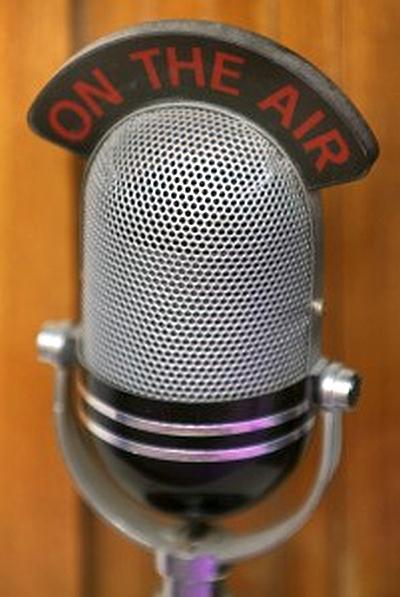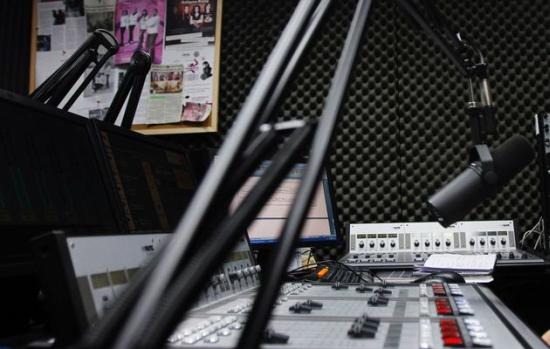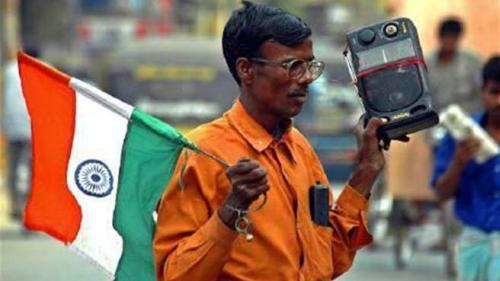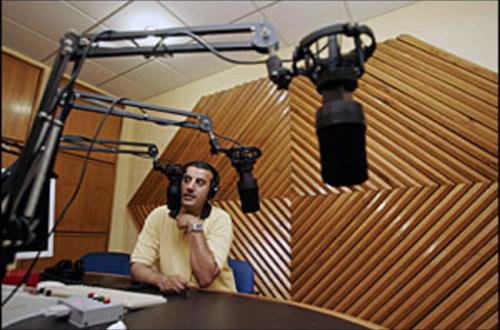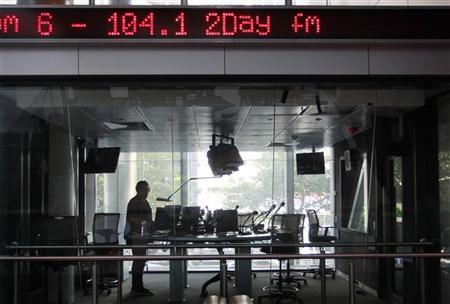 | « Back to article | Print this article |
Why e-auction of radio stations may hamper the industry
As the government has adopted ascending e-auction for radio waves, there is a danger that players might end up overbidding.
When will we hear a different tune on radio? Within the next one year, if Uday Varma, secretary at the ministry of information and broadcasting, is to be believed.
He says that the request for proposals for the auctioneer for FM radio's third phase, which will see 839 stations being auctioned, is ready.
He reckons that the auction itself should take place in the next couple of months and the new stations should be operational within the current financial year.
That should lead to big smiles in the beleaguered radio industry - which has been whinging, rightly, about the delay in phase three. It is critical to the growth of the industry.
After 12 years of privatisation, radio remains one of the smallest segments of the Rs 80,000-odd-crore (Rs 800-odd-billion) media and entertainment industry.
Click NEXT to read more...
Why e-auction of radio stations may hamper the industry
In a market with the potential for thousands of stations, India has only 568. There are 242 private FM stations and 326 from the state-controlled All India Radio network, or AIR.
The internet, which reaches roughly 40 per cent fewer Indians, does twice as much in revenues.
It is growing at a compounded annual growth rate that is four times that of radio, going by the figures released by Ficci-KPMG in March this year.
Out of 30 or so radio operators, only three are profitable at a post-tax level, says an Ernst & Young report released in December 2012. The companies that are profitable, Radio Mirchi or Big FM, have done it by having 50 or more stations.
To improve profitability and advertising rates, scale is an imperative for the Rs 1,270-crore (Rs 12.70 billion) radio industry.
It could hit Rs 2,300 crore (Rs 23 billion) in revenues within three years with the addition of 839 more stations, says Ashish Pherwani, partner, Ernst & Young.
Click NEXT to read more...
Why e-auction of radio stations may hamper the industry
This phase is also critical if listeners are to get more variety. Currently, all radio stations play similar music.
The ability to own more than one station in a city and to offer news, not allowed currently, will boost experimentation and, therefore, programming variety - the policy for phase three allows both.
The Union Cabinet approved it in July 2011 and an empowered group of ministers did that in March this year. However, it has faced more delays than usual.
The fear of deciding on anything to do with any spectrum, including that for radio, was holding things back - and it still makes everyone extra careful.
So, even though there is the real danger of overbidding this time around, the government is going ahead with an open, ascending e-auction, though the industry is not too happy with it.
A quick recap. In the first phase, in 2000, an open, ascending auction ended in overbidding.
Click NEXT to read more...
Why e-auction of radio stations may hamper the industry
In the second phase, in 2006, closed bids, with a reserve price of zero, worked well. That really is when private radio took off. For the third phase the Cabinet has recommended an open, ascending, e-auction.
There is no issue with the "e" part since it brings transparency to the whole process. It is the "open, ascending" bit that worries everybody.
Typically open, ascending auctions are used in a competitive scenario for a rare painting or artefact, not for a combination of radio frequencies. Remember that these will be used as free-to-air to users and will make money from advertisers.
There is a real danger that this form of auction could lead to overbidding and impossible break-evens, like it happened in phase one.
Besides, an open, ascending auction starts with a reserve price that is fixed at the highest bid for a town in a similar category in the same region.
Click NEXT to read more...
Why e-auction of radio stations may hamper the industry
So, for example, the second-phase bid of Rs 15.6 crore (Rs 156 million) for Chandigarh becomes the reserve price for small towns in Uttar Pradesh and Haryana, though the potential for advertising revenues is not similar.
More than 90 per cent of the licences to be auctioned in phase three are tier-two and tier-three towns, such as Muzaffarnagar or Salem. The costs in towns have to be kept below Rs 40-70 lakh (Rs 4 - 7 million) for a station to be viable.
Then there is the whole question of whether the licences issued earlier will be renewed and at what price. But what really matters is the auction.
If it goes off well and there is no litigation about it, the industry should be home safe and dry. If it doesn't, then hang on for a long wait filled with carping from radio operators.
http://twitter.com/vanitakohlik
